Music
Trailers
DailyVideos
India
Pakistan
Afghanistan
Bangladesh
Srilanka
Nepal
Thailand
Iraq
Iran
Russia
Brazil
StockMarket
Business
CryptoCurrency
Technology
Startup
Trending Videos
Coupons
Football
Search
Download App in Playstore
Download App
Best Collections
Technology
A new flurry of tweets from President Trump is pushing the limits of social platform policies designed explicitly to keep users safe from the spread of the novel coronavirus, both online and off.
In a series of rapid-fire messages on Friday morning, Trump issued a call to &LIBERATE& Virginia, Minnesota and Michigan, all states led by Democratic governors. Trumptweets promoted protests in those states against ongoing public safety measures, many designed by his own administration, meant to keep residents safe from the virus. Trump also shared the messages on his Facebook page.
In the case of Minnesota, the tweet was not a generic message to his supporters in the state — it referenced a Friday protest event by its name, &Liberate Minnesota.&
In Minnesota, the in-person protest event gathered a group of Trump supporters outside the St. Paul home of Minnesota Governor Tim Walz to protest the stateongoing lockdown. According to a reporter on the scene Friday, the protest had attracted attendees in the &low hundreds& so far and few were practicing social distancing or wearing masks. The event was organized on Facebook.
&President Trump has been very clear that we must get America back to work very quickly or the ‘cure& to this terrible disease may be the worse option!,& the eventFacebook description states. In a later disclaimer, event organizers encourage attendees to exercise &personal responsibility& at the protest, stating that they &are not responsible for your current health situation or future health.&
The presidenttweets contradict his administrationown guidance, detailed yesterday in coordination with health experts, on reopening state economies. Earlier this week, Trump claimed that a president has &total authority& to reopen the national economy, a sentiment that his tweets Friday appeared to undermine.
Trumpcalls to action in support of state-based protests would also appear to potentially contradict both Twitter and Facebooknew rules specific to the pandemic, which in both cases explicitly forbid any COVID-19 content that could result in the real-world spread of the virus.
Over the last month, Facebook and Twitter both rolled out relatively aggressive new policies designed to protect users from content contradicting the guidance of health experts, particularly anything that could result in real-world harm.
Update: According to a Twitter spokesperson, the presidenttweets do not currently violate Twitterrules. Twitter does not consider the tweets as worded a &clear call to action& that could pose a health risk. Twitter also did not determine that the tweets were shared with harmful intentions.
Facebook did not provide answers to questions about the protests organized on its platform by the time of publication.
In late March, Twitter updated its safety policy to prohibit any tweets that &could place people at a higher risk of transmitting COVID-19.& The stance banned tweets claiming social distancing doesn&t work as well as anything with a &call to action& that could promote risky behaviors, like encouraging people to go out to a local bar.
On April 1, Twitter again broadened its definition for the kind of harmful COVID-19 content it forbids, stating that it would &continue to prioritize removing content when it has a clear call to action that could directly pose a risk to peoplehealth or well-being.&
Facebook similarlyexpanded its platform rules to match the existential health threat posed by the coronavirus. In guidance on its policies for the pandemic, Facebook says that it &remove[s] COVID-19 related misinformation that could contribute to imminent physical harm.& As an example, the company noted that in March it began removing &claims that physical distancing doesn&t help prevent the spread of the coronavirus.&
Social media companies signaled early in the U.S. spread of the coronavirus that they would take health misinformation — and the safety of their users — more seriously than ever. In some instances, this tough talk appears to have manifested in improvements: Facebook, which has generally been more proactive about health misinformation compared to other topics, moved to promote health expertise and limit the spread of misleading coronavirus content on the platform, even announcing that it would notify anyone who had interacted with COVID-19 misinformation with a special message in their news feed.

- Details
- Category: Technology Today
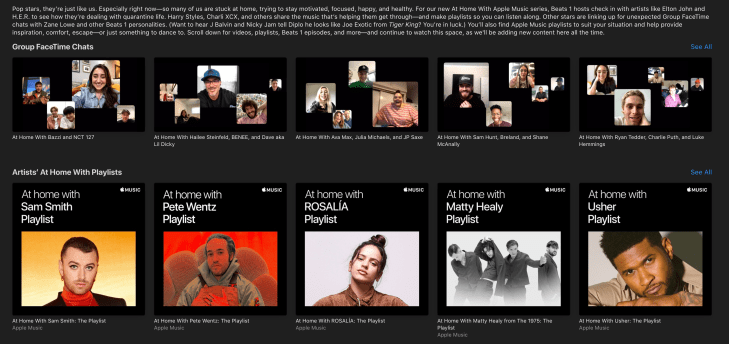
Apple has done a good job closing the gap between Spotify and its own music streaming service. But the former still maintains some advantages, a list that until recently included a robust web interface. As a Spotify user myself, I find myself frequently using the browser interface on different devices.
Applebeen working on its own version of course, but for the past six months, itonly been available as a beta. The interface dropped that tag today, officially going live sans-beta URL. As noted by MacRumors, the interface looks nearly identical to the desktop app, but bringing it to browsers allows for a lot more cross-platform flexibility.
Once logged in with an Apple ID, your music library should be visible. The news also comes as Apple prepares for tonightOne World: Together at Home concert, co-hosted by three late-night comedians and featuring everyone from Paul McCartney and Elton John to Lady Gaga and Lizzo.
- Details
- Category: Technology Today
Read more: Apple Songs's web user interface departures beta
Write comment (90 Comments)A coalition of EU scientists and technologists thatdeveloping whatbilled as a &privacy-preserving& standard for Bluetooth-based proximity tracking, as a proxy for COVID-19 infection risk, wants Apple and Google to make changes to an API they&re developing for the same overarching purpose.
The Pan-European Privacy-Preserving Proximity Tracing (PEPP-PT) uncloaked on April 1, calling for developers of contact tracing apps to get behind a standardized approach to processing smartphone users& data to coordinate digital interventions across borders and shrink the risk of overly intrusive location-tracking tools gaining momentum as a result of the pandemic.
PEPP-PT said today it has seven governments signed up to apply its approach to national apps, with a claimed pipeline of a further 40 in discussions about joining.
&We now have a lot of governments interacting,& said PEPP-PTHans-Christian Boos, speaking during a webinar for journalists. &Some governments are publicly declaring that their local applications will be built on top of the principles of PEPP-PT and also the various protocols supplied inside this initiative.
&We know of seven countries that have already committed to do this — and we&re currently in conversation with 40 countries that are in various states of onboarding.&
Boos said a list of the governments would be shared with journalists, though at the time of writing we haven&t seen it. But we&ve asked PEPP-PTPR firm for the info and will update this report when we get it.
&The pan-European approach has worked,& he added. &Governments have decided at a speed previously unknown. But with 40 more countries in the queue of onboarding we definitely have outgrown just the European focus — and to us this shows that privacy as a model and as a discussion point… is a statement and it is something that we can export because we&re credible on it.&
Paolo de Rosa, the CTO at the Ministry of Innovation Technology and Digital Transformation for the Italian government, was also on the webinar — and confirmed its national app will be built on top of PEPP-PT.
&We will have an app soon and obviously it will be based on this model,& he said, offering no further details.
PEPP-PTcore &privacy-preserving& claim rests on the use of system architectures that do not require location data to be collected. Rather devices that come near each other would share pseudonymized IDs — which could later be used to send notifications to an individual if the system calculates an infection risk has occurred. An infected individualcontacts would be uploaded at the point of diagnosis — allowing notifications to be sent to other devices with which had come into contact.
Boos, a spokesman for and coordinator of PEPP-PT, told TechCrunch earlier this monththe project will support both centralized and decentralized approaches. The former meaning IDs are uploaded to a trusted server, such as one controlled by a health authority; the latter meaning IDs are held locally on devices, where the infection risk is also calculated — a backend server is only in the loop to relay info to devices.
Itjust such a decentralized contacts tracing system that Apple and Google are collaborating on supporting — fast-following PEPP-PT last week by announcing a plan for cross-platform COVID-19 contacts tracing via a forthcoming API and then a system-wide (opt-in) for Bluetooth-based proximity tracking.
That intervention, by the only two smartphone platforms that matter when the ambition is mainstream adoption, is a major development — putting momentum behind decentralized contacts tracing for responding digitally to the coronavirus crisis in the Western world, certainly at the platform level.
In a resolution passed today the European parliament also called for a decentralized approach to COVID-19 proximity tracking.
MEPs are pushing for the Commission and Member States to be &fully transparent on the functioning of contact tracing apps, so that people can verify both the underlying protocol for security and privacy and check the code itself to see whether the application functions as the authorities are claiming.& (The Commission has previously signaled a preference for decentralization too.)
However, backers of PEPP-PT, which include at least seven governments (and the claim of many more), aren&t giving up on the option of a &privacy-preserving& centralized option — which some in their camp are dubbing &pseudo-decentralized& — with Boos claiming today that discussions are ongoing with Apple and Google about making changes to their approach.
As it stands, contacts tracing apps that don&t use a decentralized infrastructure won&t be able to carry out Bluetooth tracking in the background on Android or iOS — as the platforms limit how general apps can access Bluetooth. This means users of such apps would have to have the app open and active all the time for proximity tracking to function, with associated (negative) impacts on battery life and device usability.
There are also (intentional) restrictions on how contacts tracing data could be centralized, as a result of the relay server model being deployed in the joint Apple-Google model.
&We very much appreciate that Google and Apple are stepping up to making the operating system layer available — or putting what should be the OS actually there, which is the Bluetooth measurement and the handling of crypto and the background running of such tasks which have to keep running resiliently all the time — if you look at their protocols and if you look at whom they are provided by, the two dominant players in the mobile ecosystem, then I think that from a government perspective especially, or from lots of government perspectives, there are many open points to discuss,& said Boos today.
&From a PEPP-PT perspective there are a few points to discuss because we want choice and implementing choice in terms of model — decentralized or centralized on top of their protocol creates actually the worst of both worlds — so there are many points to discuss. But contrary to the behavior that many of us who work with tech companies are used to Google and Apple are very open in these discussions and thereno point in getting up in arms yet because these discussions are ongoing and it looks like agreement can be reached with them.&
It wasn&t clear what specific changes PEPP-PT wants from Apple and Google — we asked for more detail during the webinar but didn&t get a response. But the group and its government backers may be hoping to dilute the tech giants& stance to make it easier to create centralized graphs of Bluetooth contacts to feed national coronavirus responses.
As it stands, Apple and GoogleAPI is designed to block contact matching on a server — though there might still be ways for governments (and others) to partially work around the restrictions and centralize some data.
We reached out to Apple and Google with questions about the claimed discussions with PEPP-PT. At the time of writing, neither had responded.
As well as Italy, the German and French governments are among those that have indicated they&re backing PEPP-PT for national apps — which suggests powerful EU Member States could be squaring up for a fight with the tech giants, along the lines of Apple versus the FBI, if pressure to tweak the API fails.
Another key strand to this story is that PEPP-PT continues to face strident criticism from privacy and security experts in its own backyard — including after it removed a reference to a decentralized protocol for COVID-19 contacts tracing thatbeing developed by another European coalition, comprised of privacy and security experts, called DP-3T.
Coindesk reported on the silent edit to PEPP-PTwebsite yesterday.
Backers of DP-3T have also repeatedly queried why PEPP-PT hasn&t published code or protocols for review to-date — and even gone so far as to dub the effort a &trojan horse.&
ETH ZürichDr. Kenneth Paterson, who is both a part of the PEPP-PT effort and a designer of DP-3T, couldn&t shed any light on the exact changes the coalition is hoping to extract from &Gapple& when we asked.
&They&ve still not said exactly how their system would work, so I can&t say what they would need [in terms of changes to Apple and Googlesystem],& he told us in an email exchange.
Today Boos couched the removal of the reference to DP-3T on PEPP-PTwebsite as a mistake — which he blamed on &bad communication.& He also claimed the coalition is still interested in including the formerdecentralized protocol within its bundle of standardized technologies. So the already sometimes fuzzy lines between the camps continue to be redrawn. (Italso interesting to note that press emails to Boos are now being triaged by Hering Schuppener, a communications firm that sells publicity services, including crisis PR.)
&We&re really sorry for that,& Boos said of the DP-3T excision. &Actually we just wanted to put the various options on the same level that are out there. There are still all these options and we very much appreciate the work that colleagues and others are doing.
&You know there is a hot discussion in the crypto community about this and we actually encourage this discussion because italways good to improve on protocols. What we must not lose sight of is… that we&re not talking about crypto here, we&re talking about pandemic management and as long as an underlying transport layer can ensure privacy thatgood enough because governments can choose whatever they want.&
Boos also said PEPP-PT would finally be publishing some technical documents this afternoon — opting to release information some three weeks after its public unveiling and on a Friday evening (a seven-page ‘high level overview& has since been put on their GitHub here [this link has since been deleted & Ed.] — but still a far cry from code for review) — while making a simultaneous plea for journalists to focus on the &bigger picture& of fighting the coronavirus rather than keep obsessing over technical details.
During todaywebinar some of the scientists backing PEPP-PT talked about how they&re testing the efficacy of Bluetooth as a proxy for tracking infection risk.
&The algorithm that we&ve been working on looks at the cumulative amount of time that individuals spend in proximity with each other,& said Christophe Fraser, professor at the Nuffield Department of Medicine and Senior Group Leader in Pathogen Dynamics at the Big Data Institute, University of Oxford, offering a general primer on using Bluetooth proximity data for tracking viral transmission.
&The aim is to predict the probability of transmission from the phone proximity data. So the ideal system reduces the requested quarantine to those who are the most at risk of being infected and doesn&t give the notification — even though some proximity event was recorded — to those people who&re not at risk of being infected.&
&Obviously thatgoing to be an imperfect process,& he went on. &But the key point is that in this innovative approach that we should be able to audit the extent to which that information and those notifications are correct — so we need to actually be seeing, of the people who have been sent the notification how many of them actually were infected. And of those people who were identified as contacts, how many weren&t.
&Auditing can be done in many different ways for each system but that step is crucial.&
Evaluating the effectiveness of the digital interventions will be vital, per Fraser — whose presentation could have been interpreted as making a case for public health authorities to have fuller access to contacts graphs. But itimportant to note that DP-3Tdecentralized protocol makes clear provision for app users to opt-in to voluntarily share data with epidemiologists and research groups to enable them to reconstruct the interaction graph among infected and at risk users (aka to get access to a proximity graph).
&Itreally important that if you&re going to do an intervention that is going to affect millions of people — in terms of these requests to [quarantine] — that that information be the best possible science or the best possible representation of the evidence at the point at which you give the notification,& added Fraser. &And therefore as we progress forwards that evidence — our understanding of the transmission of the virus — is going to improve. And in fact auditing of the app can allow that to improve, and therefore it seems essential that that information be fed back.&
None of the PEPP-PT-aligned apps that are currently being used for testing or reference are interfacing with national health authority systems, per Boos — though he cited a test in Italy thatbeen plugged into a companyhealth system to run tests.
&We have supplied the application builders with the backend, we have supplied them with sample code, we have supplied them with protocols, we have supplied them with the science of measurement, and so on and so forth. We have a working application that simply has no integration into a countryhealth system — on Android and on iOS,& he noted.
On its website PEPP-PT lists a number of corporate &members& as backing the effort — including the likes of Vodafone — alongside several research institutions including GermanyFraunhofer Heinrich Hertz Institute for telecoms (HHI) which has been reported as leading the effort.
The HHIexecutive director, Thomas Wiegand, was also on todaycall. Notably, his name initially appeared on the authorship list for the DP-3Twhite paper. However, on April 10 he was removed from the README and authorship list, per its GitHub document history. No explanation for the change was given.
During todaypress conference Wiegand made an intervention that seems unlikely to endear him to the wider crypto and digital rights community — describing the debate around which cryptography system to use for COVID-19 contacts tracing as a ‘side show& and expressing concern that what he called Europe&open public discussion& might &destroy our ability to get ourselves as Europeans out of this.&
&I just wanted to make everyone aware of the difficulty of this problem,& he also said. &Cryptography is only one of 12 building blocks in the system. So I really would like to have everybody go back and reconsider what problem we are in here. We have to win against this virus… or we have another lockdown or we have a lot of big problems. I would like to have everybody to consider that and to think about it because we have a chance if we get our act together and really win against the virus.&
The press conference had an even more inauspicious start after the Zoom call was disrupted by racist spam in the chat field. Right before that Boos had kicked off the call saying he had heard from &some more technically savvy people that we should not be using Zoom because itinsecure — and for an initiative that wants security and privacy itthe wrong tool.&
&Unfortunately we found out that many of our international colleagues only had this on their corporate PCs so over time either Zoom has to improve — or we need to get better installations out there. Itcertainly not our intention to leak the data on this Zoom,& he added.

- Details
- Category: Technology Today
Read more: Original text too long. Text can have up to 4,000 words.
Write comment (93 Comments)Would you pay with a &Google Card?& TechCrunch has obtained imagery that shows Google is developing its own physical and virtual debit cards. The Google card and associated checking account will allow users to buy things with a card, mobile phone or online. It connects to a Google app with new features that let users easily monitor purchases, check their balance or lock their account. The card will be co-branded with different bank partners, including CITI and Stanford Federal Credit Union.
A source provided TechCrunch with the images seen here, as well as proof that they came from Google. Another source confirmed that Google has recently worked on a payments card that its team hopes will become the foundation of its Google Pay app — and help it rival Apple Pay and the Apple Card. Currently, Google Pay only allows online and peer-to-peer payments by connecting a traditionally issued payment card. A &Google Pay Card& would vastly expand the appuse cases, and Googlepotential as a fintech giant.
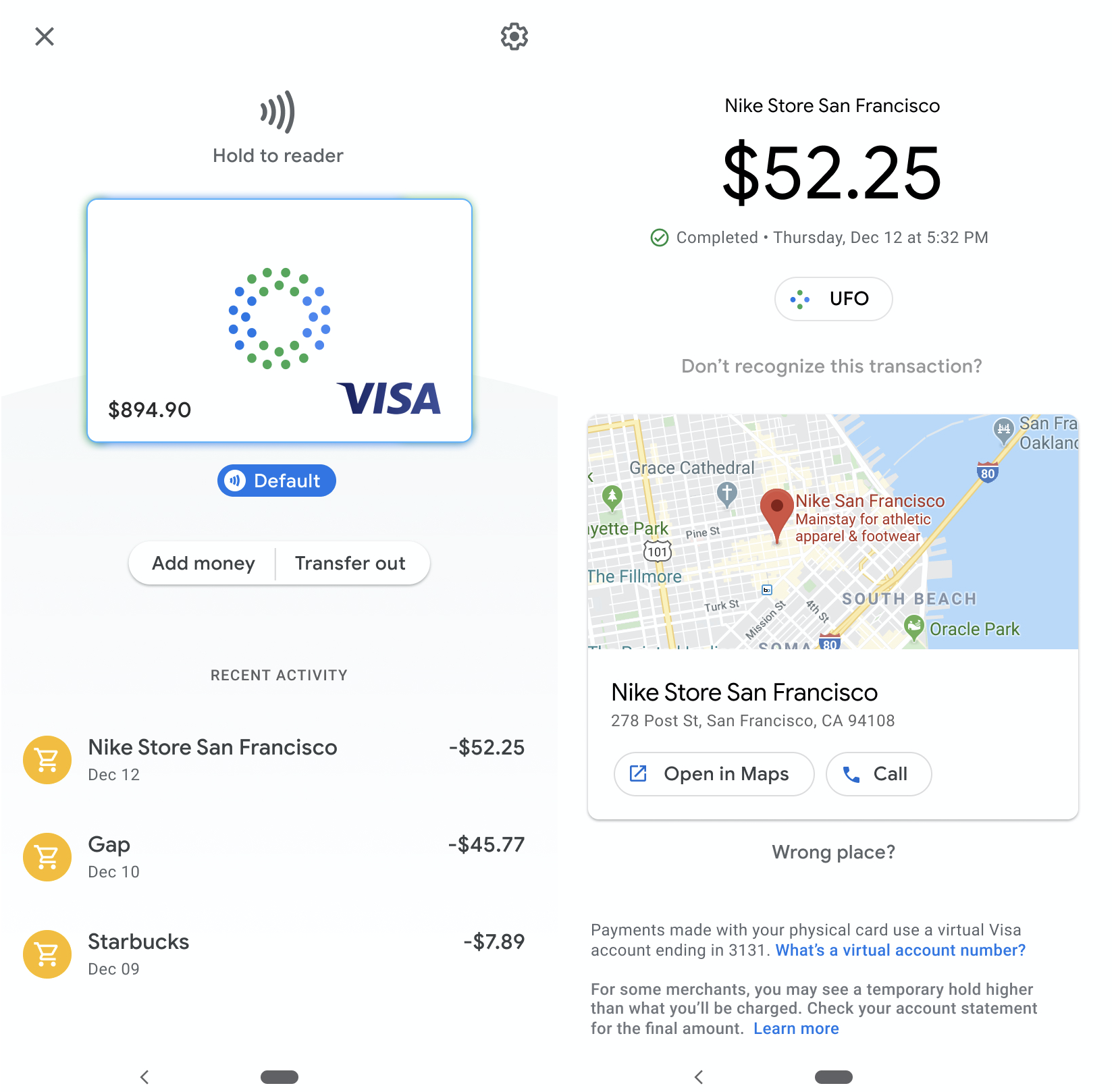
Google the financial services company?
By building a smart debit card, Google has the opportunity to unlock new streams of revenue and data. It could potentially charge interchange fees on purchases made with the card or other checking account fees, and then split them with its banking partners. Depending on its privacy decisions, Google could use transaction data on what people buy to improve ad campaign measurement or even targeting. Brands might be willing to buy more Google ads if the tech giant can prove they drive a sales lift.
The long-term implications are even greater. While once the industry joke was that every app eventually becomes a messaging app, more recently itbeen that every tech company eventually becomes a financial services company. A smart debit card and checking accounts could pave the way for Google offering banking, stock brokerage, financial advice or robo-advising, accounting, insurance or lending.
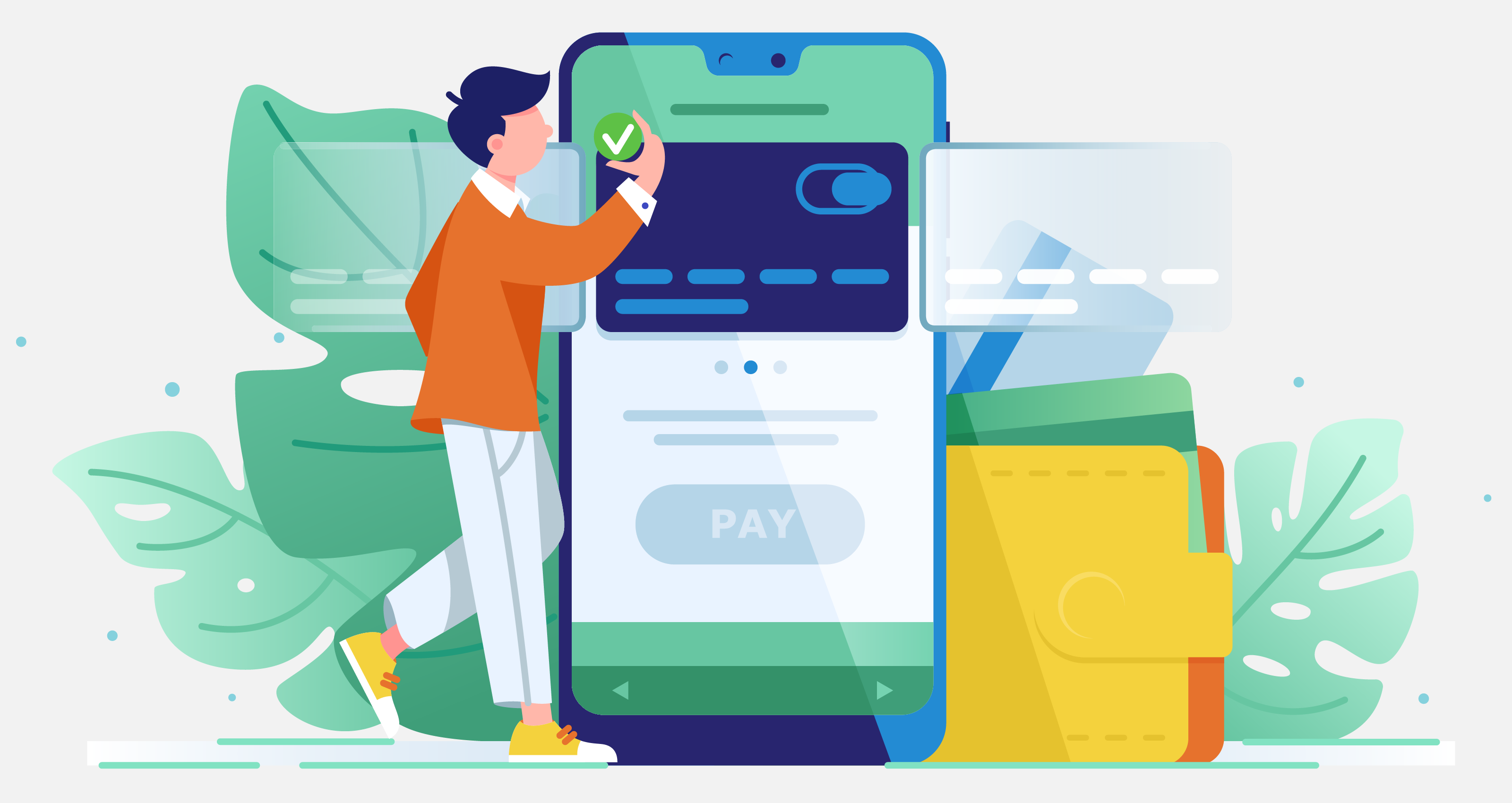
Image Credits: jossnatu / Getty Images
Googlevast access to data could allow it to more accurately manage risk than traditional financial institutions. Its deep connection to consumers via apps, ads, search and the Android operating system gives it ample ways to promote and integrate financial services. With the COVID-19 downturn taking shape, high-margin finance products could help Google develop efficient revenue opportunities and build its share price back up.
When TechCrunch asked Google for confirmation, it did not dispute our findings or assertions. The company offered us a statement it provided reporters following a November story, wherein Google told The Wall Street Journal it was experimenting in the checking account space. TechCrunch is the first to report Googledebit card plans:
We&re exploring how we can partner with banks and credit unions in the US to offer smart checking accounts through Google Pay, helping their customers benefit from useful insights and budgeting tools, while keeping their money in an FDIC or NCUA-insured account. Our lead partners today are Citi and Stanford Federal Credit Union, and we look forward to sharing more details in the coming months.
For now, Googlestrategy is to let partnered banks and credit unions provide the underlying financial infrastructure and navigate regulation while it builds smarter interfaces and user experiences. Itforseeable that one day Google might cut out the banks and take all the spoils for itself. Google launched a Wallet debit card in 2013 as an extension of its old payment app Google Wallet, but shut the card down in 2016. Given Googlepenchant for renaming or shutting down then reviving products, building a new debit card feels on-brand.
With people around the world suddenly more concerned about their finances amidst the coronavirus economic disaster, a debit card with more transparency and controls could be appealing.
First look at the Google Card
Traditional banking products can be clunky, often requiring phone communication with customer service or sifting through cluttered websites to address security issues. Google hopes to make financial management as intuitive as its email and mapping apps. The card and app designs shown here are not final, and itunclear when Googledebit card may launch. But lettake a look at what these internal Google materials reveal about its ambitions for its payment instrument.
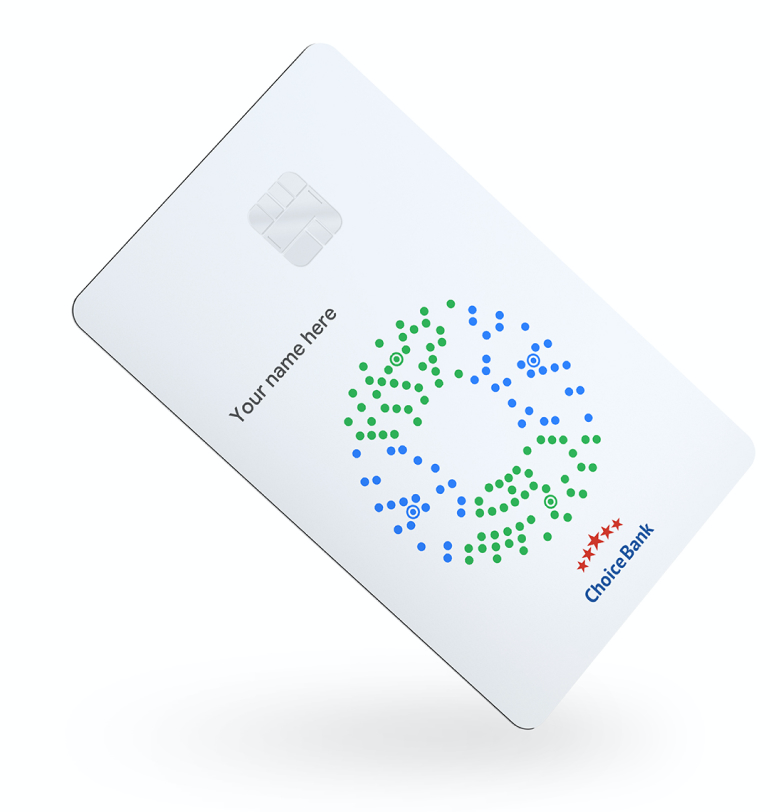
The Google debit card will come co-branded with the Google name and its partnered bank, though the exact name of the product is still unknown. In the designs, ita chip card on the Visa network, though Google could potentially support other networks like Mastercard. Users are able to add money or transfer funds out of their account from the connected Google app, which is likely to be Google Pay, and use a fingerprint and PIN for account security.
Once connected to their bank or credit union account, users could pay for purchases in retail stores with a physical Google debit card, including with contactless payments, by just holding it up to a card reader. A virtual version of the card that lives on a userphone can also be used for Bluetooth mobile payments. Meanwhile, a virtual card number can be used for online or in-app payments.
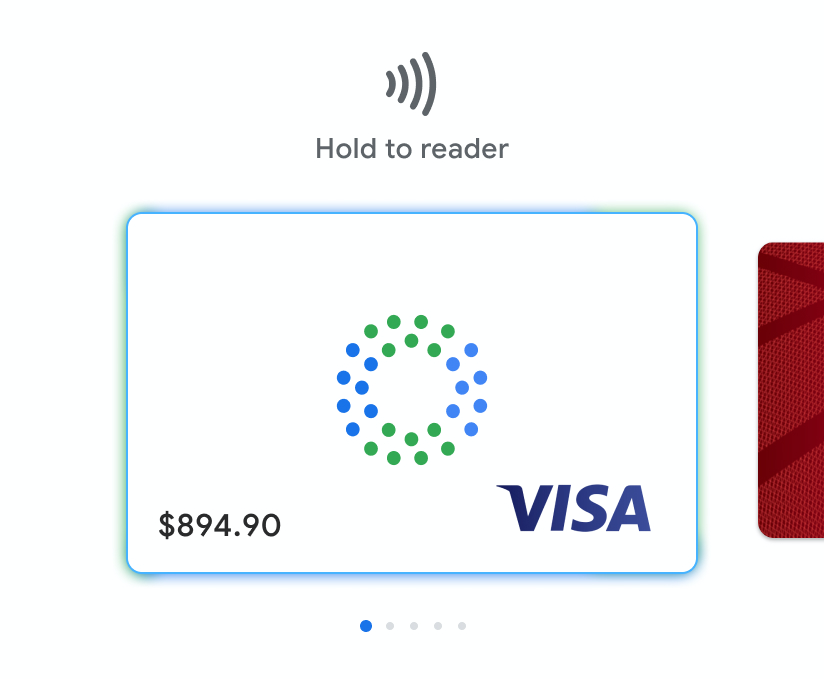
Users are shown a list of recent transactions, with each including the merchant name, date and price. They can dig into each transaction to see the location on a map, get directions or call the store. If users don&t recognize a transaction, iteasy to protect themselves with the cardvast security options.
If a customer suspects foul play because they lost their card, they can lock it and optionally order a replacement while still being able to pay with their phone or online, thanks to Googlevirtual card number system thatdifferent than the one on their physical card. If instead they suspect their virtual card number was stolen by a hacker, they can quickly reset it. And if they believe someone has gained unauthorized access to their account, they can lock it entirely to block all types of payments and transfers.
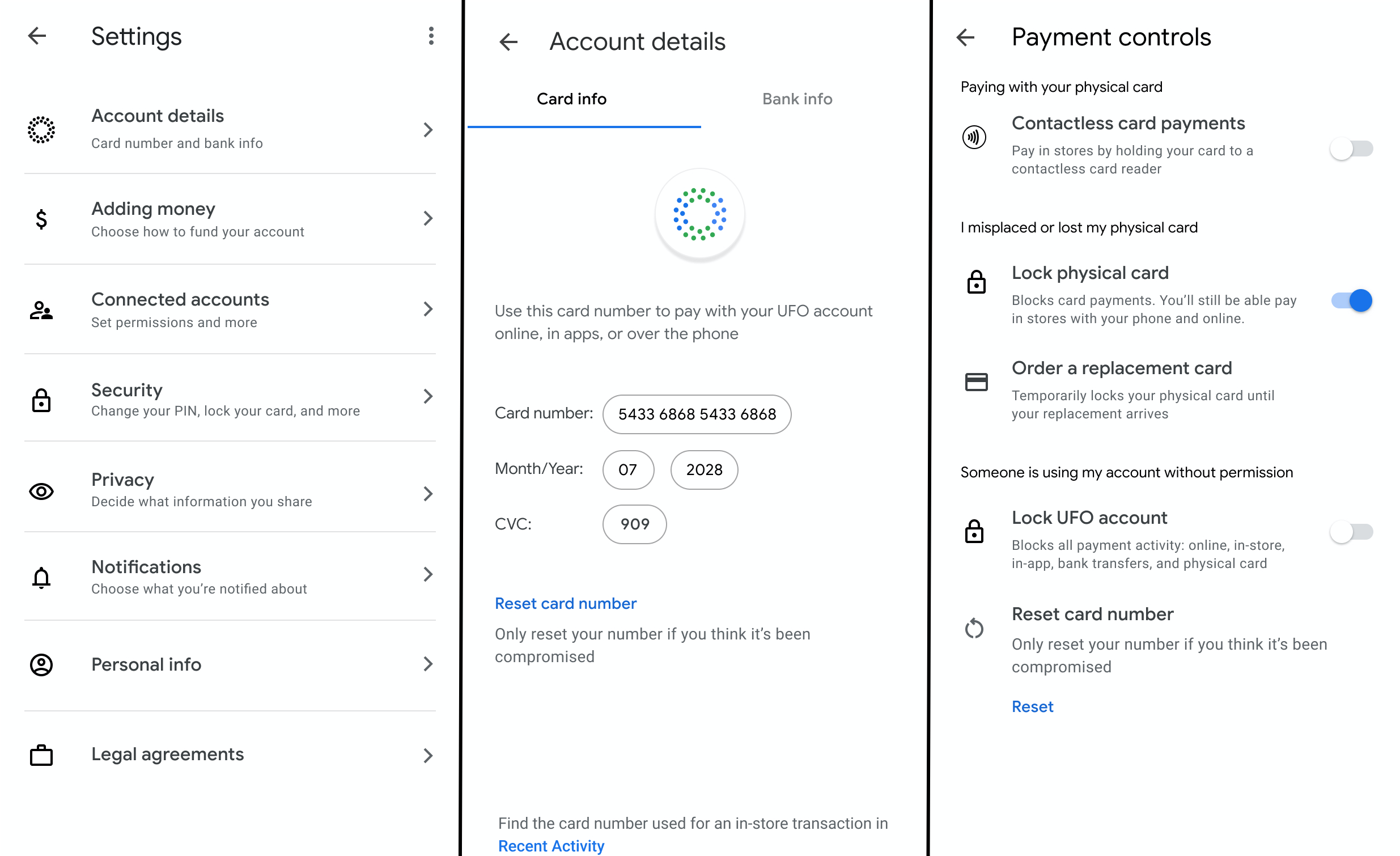
The settings reveal options for notifications and privacy controls to &decide what information you share,& though we don&t have imagery of whatcontained in those menus. Itunclear how much power Google will give customers to limit the company or merchantdata access. Googledecisions there could impact how transaction data might fuel its other businesses.
Fintech everywhere
Google is a relative late-comer to offering its own card. Apple launched its Apple Card in August, offering a slickly designed titanium Mastercard credit card backed by Goldman Sachs. It charges minimal customer fees, comes with a virtual card for use through Apple Pay and generates interest.

Apple Card
Apple does collect interchange fees from merchants, though, which Google could similarly gather to earn revenue. Last month, Apple changed the Cardprivacy settings to share more data with Goldman Sachs that might also help the two provide additional financial services. Apple Pay now accounts for 5% of global card transactions, and is forecast to hit 10% by 2024, according to Bernstein research. The underlines the gigantic market Google is gunning for here.
The stock brokerage and robo-advisor apps have also joined the payments race. Wealthfront launched cash accounts and debit cards last February, bringing in $1 billion in assets in two months and doubling the companytotal holdings to $20 billion by September. Betterment launched its checking product in October 2019 with a Visa debit card, but it doesn&t generate interest.
Robinhood botched the December 2018 launch of its checking accounts due to ineligible insurance, but relaunched in October 2019 with debit card withdrawls from 75,000 ATMs and a solid interest rate. Itunclear how Googlecard will work with ATMs or how its checking accounts will generate interest.

Robinhooddebit cards
The appeal for Google and the rest is clear. It seems whenever companies help move peoplemoney around, some of it inevitably &falls off the truck& and lands in their pockets. Financial services are typically low-overhead ways to generate revenue. That could be especially enticing, as Google has found many of its side hustle &other bets& to be unsustainable. Itmoved to prune some of these tertiary projects, such as its Makani wind energy kites.
Google may never find businesses as lucrative as its core in search and advertising, but it has the advantages to become a serious player in fintech. Its vast sums of cash, deep bench of engineering talent, experience building complex utilities, numerous consumer touch points and near-bottomless well of data could give it an edge over stodgier old banks and scrappier startups. And while Facebook slams into regulatory scrutiny and is forced to scale back its Libra cryptocurrency, Googlemore familiar approach via debit cards could pay off.
- Details
- Category: Technology Today
Read more: Dripped images reveal Google smart debit card to rival Apple's
Write comment (97 Comments)Stripe raises new funding, Uber acknowledges financial uncertainty and a controversial facial recognition startup accidentally exposes its source code.
Hereyour Daily Crunch for April 17, 2020.
1. Stripe raises $600M at $36B valuation in Series G extension, says it has $2B on its balance sheet
The economy may be contracting as a result of the COVID-19 pandemic, but promising startups are still continuing to raise money to shore up finances for whatever may lie ahead.
The latest development: Stripe, a well-known payments unicorn, announced that it had raised another $600 million in new capital, money that it plans to use to continue investing in product development, further global expansion and strategic initiatives.
2. Uber withdraws 2020 guidance
&Given the evolving nature of COVID-19 and the uncertainty it has caused for every industry in every part of the world, it is impossible to predict with precision the pandemiccumulative impact on our future financial results,& Uber said in a statement.
3. Security lapse exposed Clearview AI source code
The controversial facial recognition startup allows its law enforcement users to take a picture of a person, upload it and match it against its alleged database of 3 billion images, which the company scraped from public social media profiles. And for a time, a misconfigured server exposed the companyinternal files, apps and source code for anyone on the internet to find.
4. Changing policy, Y Combinator cuts its pro rata stake and makes investments case-by-case
Under its new policy, the accelerator is reducing its pro rata investment size from 7% to 4% and is only investing on a case-by-case basis going forward. Apparently the portfolio has gotten too large for blanket investments, and some of the limited partners who back the acceleratoroperations are balking at making commitments to the pro rata program.
5. Announcing the Extra Crunch Live event series
First up: We&ll be chatting with Aileen Lee (former KPCB partner, founder and managing director at Cowboy.vc and coiner of the term &Unicorn&) and Ted Wang (Cowboy.vc partner, former partner at Fenwick - West, and former outside counsel to Facebook, Twitter, Dropbox, Square and more) on Monday, April 20. And yes, you&ll need to be an Extra Crunch member to tune in.
6. NASA reveals ambitious multi-spacecraft plan to bring a piece of Mars back to Earth
NASA has said many times that it intends to collect a sample from Mars and return it to Earth. But how will the organization go about scooping up soil from the surface of a distant planet and getting it back here? With a newly-revealed plan that sounds straight out of sci-fi.
7. Facebookannual virtual reality conference goes virtual-only
Facebook announced that it will be shelving the in-person component of its virtual reality-focused Oculus Connect 7 conference due to COVID-19 concerns and focusing on a digital format. Although the company hadn&t announced dates for the event, the conference is typically held in late September or early October.
The Daily Crunch is TechCrunchroundup of our biggest and most important stories. If you&d like to get this delivered to your inbox every day at around 9am Pacific, you can subscribe here.

- Details
- Category: Technology Today
Read more: Daily Crunch: Red stripe currently valued at $36B
Write comment (91 Comments)NASA and SpaceX have set a specific date and time target for their historic first astronaut launch aboard a private spacecraft from U.S. soil, with a planned date of May 27 and a target liftoff time of 4:32 PM EDT (1:32 PM PDT) from Kennedy Space Center, at SpaceXLaunch Complex 39A (LC-39). The mission had been previously announced to be tracking toward a mid to late-May launch time frame, but now we know exactly when the agency and SpaceX hope to launch astronauts Bob Behnken and Doug Hurley for this inaugural trip to the International Space Station.
The launch is the first crewed mission in NASACommercial Crew program, which seeks to return American launch capabilities to U.S. soil through private partnerships, with both SpaceX and Boeing taking part and developing their own separate launch vehicles and crew craft. SpaceX has taken all the steps necessary to get to this stage ahead of Boeing, and this flight, called Demo-2, while still technically part of the test program, will see NASAastronauts visit the space station for &an extended stay,& with a full duration yet to be determined.
This final test will validate each aspect of the Crew Dragon and Falcon 9 launch system, including the pad from which the rocket takes off, the operational facilities on the ground, orbital systems and astronaut procedures. Pending successful completion of all those elements, Crew Dragon should be set for full operational certification, after which time it can begin regularly scheduled service of delivering astronauts to and from the ISS.
For the mission, Crew Dragon will launch with Behnken and Hurley, then enter orbit and rendezvous with the ISS, which should occur around 24 hours after liftoff. The spacecraft is designed to dock fully autonomously with the station (and has done so on a previous occasion during an uncrewed demo mission), then Behnken and Hurley will disembark and join as members of the ISS crew, performing research on the orbital science platform.

The Crew Dragon flying this mission is designed to stay on orbit for around 110 days, but its actual length of stay will be decided by how ready the commercial crew mission to follow is at the time of launch. That Crew Dragon, which is the fully operational version, is designed for stays of at least 210 days, and the crew complement of four astronauts, including three from NASA and one from Japanspace agency, is already determined. If all goes well, it&ll happen sometime later this year.
Crew Dragon from Demo-2 will perform an automated undocking from the ISS with Behnken and Hurley on board when it is ready to leave, and then they&ll re-enter Earthatmosphere and have a controlled splashdown landing in the Atlantic Ocean, where a SpaceX ship will pick them up and bring them back to Florida.
Obviously, NASA and SpaceX are facing challenges, along with everyone else, with the global COVID-19 crisis ongoing, but the agency has taken extra precautions to ensure this mission continues, since NASA Administrator Jim Bridenstine notes that continued U.S. access to, and presence within the ISS is critical.
- Details
- Category: Technology Today
Read more: NASA and SpaceX established historic very first astronaut launch for Might 27
Write comment (90 Comments)Page 953 of 1437

 5
5





